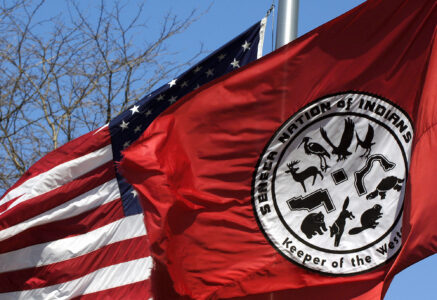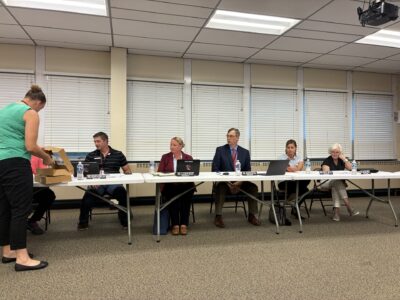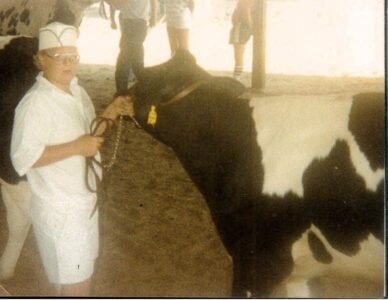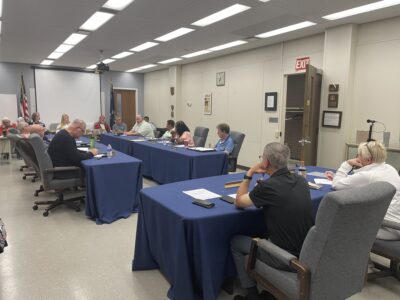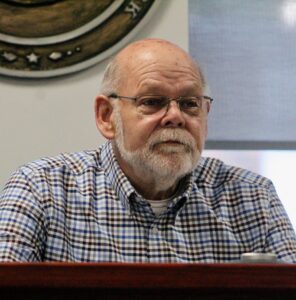Historic State Miscues Drive Seneca Ire
Editor's Corner
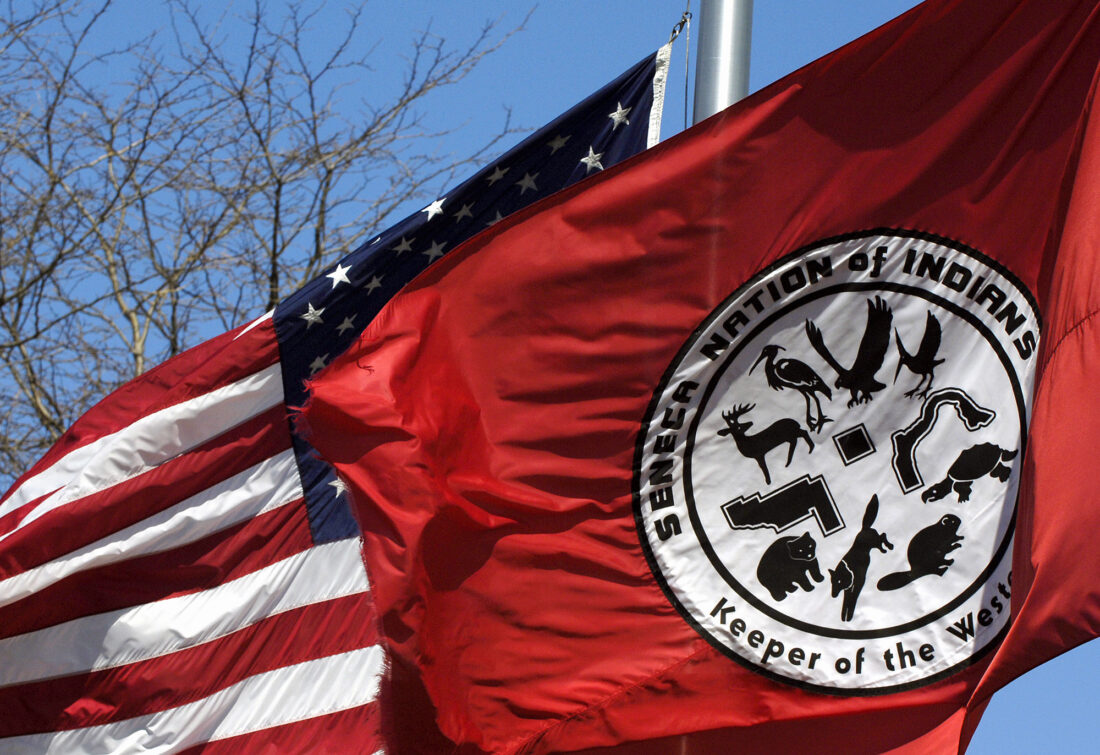
Pictured are the U.S. flag and Seneca Nation of Indians flag in Irving. AP photo
Signs of discontent have been evident for years along Interstate 90 east of the Silver Creek and Irving exit. Once motorists enter Seneca Nation of Indian territory, a billboard expresses its disdain for New York state.
“A fee is assessed for all vehicles traveling through Seneca jurisdiction and is unpaid to date by New York state,” it notes. “NYS owes over $675 million.”
Those claims gained added traction last week when the Nation secured a significant legal victory in its ongoing efforts to hold the state and its Thruway Authority accountable for decades of illegally operating the toll road across the Nation’s Cattaraugus Territory. In his report and recommendation to the U.S. District Court of the Western District, Judge Michael Roemer said the state violated the law when it attempted to obtain a right-of-way in 1954 without federal approval. He recommended the court enter a declaratory judgment finding the easement used by the state to construct the Thruway on Nation lands is void, and that the Court order the state to immediately negotiate terms of a new easement with the Seneca Nation.
“Judge Roemer’s report is clear — the state of New York continues to operate and profit from a Thruway that it never had proper authorization to build on our territory,” Seneca Nation President J. Conrad Seneca said. “It is beyond time for state officials to engage the Seneca Nation in meaningful negotiations to account for the state’s violation of our treaty rights, its ongoing violation of federal law, and its illegal use of our land.”
At the moment, there is no telling how the recent decision will play out, but one thing is certain: Roemer’s edict is one more indication that Albany has more than contributed to the tenuous and disintegrating relationship with the Nation. No matter who has been at the helm of the Empire State in recent decades, the Nation has consistently been given reasons to lose its faith and trust.
Some of the most contentious events occurred in the early and late 1990s when the administrations of Gov. Mario Cuomo and later Gov. George Pataki attempted to collect taxes from the Nation on gasoline and cigarettes sold to non-Native customers. Those efforts led to dangerous clashes with New York State Police, tire burning and the closing of Route 17 — currently Interstate 86. It also impacted travelers of the New York State Thruway near the Silver Creek and Irving exit.
Even as an economic engine for development, the Nation has been on the hook for a portion of fees through its casino compact from 2002 to 2023 with the state that led to the building of the Seneca Niagara Resort & Casino on the Niagara Falls Territory in Niagara Falls, New York; the Seneca Allegany Resort & Casino in Salamanca on the Allegany Territory; and the Seneca Buffalo Creek Casino in downtown Buffalo on the Buffalo Creek Territory. These efforts were $2 billion in private investment while generating 5,000 jobs at a time when the Western New York economy was sluggish at best.
A new compact was put forth by the Nation before the 2023 deadline, but a segment of Rochester-area Assembly leaders noted disapproval leading to a destruction of the deal along with added dissension. “New York has spent the last several years expanding gaming, whether through new commercial casinos or opening up mobile sports betting to a billion dollars in wagers each year,” then Nation President Rickey Armstrong Sr. said angrily. “The state has time and time again lowered the tax rate on the Seneca Nation’s competitors, placing the nation at a competitive disadvantage.”
As of today, there remains no deal and continued strained relations by the two entities.
Gov. Kathy Hochul’s visit in the spring at the William Seneca Building on the Cattaraugus territory was meant to help with the healing process between the entities. She delivered an official apology regarding the “atrocities” committed at the Thomas Indian School along with other Native American boarding schools across the region that stripped Indigenous children of their traditional language and culture. In addition, they suffered abuse, violence, hatred, at the hands of school officials. Many students even lost their lives..
“I cannot change the horrors of the past. I wish I could,” Hochul said to a crowd of hundreds of guests. “I wish I could wipe it all away. You deserve that.”
Those were the right words, but other state actions often appear to send a penalized tone.
Last week after Roemer’s decision, the Nation noted approximately 30,000 vehicles cross Seneca Nation lands using the Thruway each day, generating significant toll revenue for the state Thruway Authority. In 2008, the Seneca Nation Council approved a resolution to begin invoicing New York State for every vehicle that travels the Thruway through the Cattaraugus Territory. The outstanding invoices total more than $4 billion to date.
“We will not stop pursuing a path to justice and a fair, equitable and legal solution that finally addresses this situation we have been forced to live with for the last 70 years,” President Seneca said last week. “We hope the District Court accepts Judge Roemer’s recommendation and forces an end to New York state’s longstanding injustice against the Seneca Nation.”
Albany leadership has been disappointing to many it serves through the years. It appears even more reckless in how it consistently deals with the proud and resilient community that is the Seneca Nation.
John D’Agostino is the editor of The Post-Journal, OBSERVER and Times Observer in Warren, Pa. Send comments to jdagostino@observertoday.com or call 716-487-1111, ext. 253.

